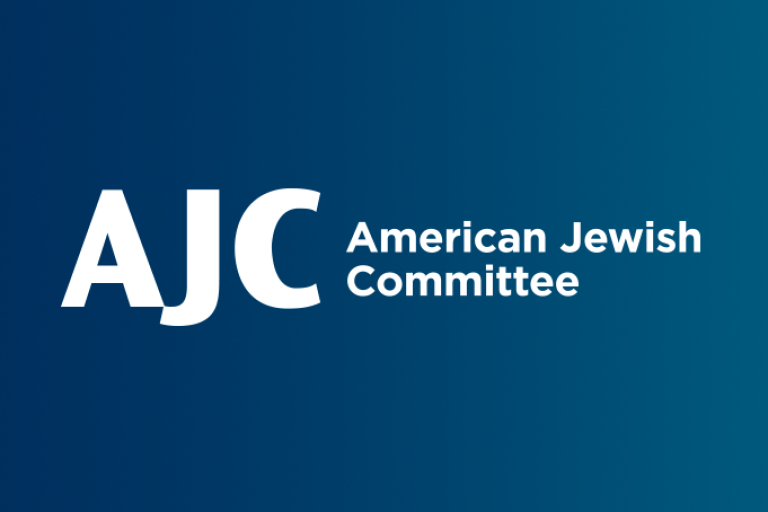June 23, 2022 — New York
On view July 28, 2022 – January 1, 2023, Confronting Hate Reveals the American Jewish Committee’s Groundbreaking Campaign to Combat Bigotry
This summer, the New-York Historical Society presents Confronting Hate 1937–1952, a timely exhibition that explores the groundbreaking campaign launched by the American Jewish Committee (AJC) in 1937 to combat increasing antisemitism in the United States during the interwar period. On view July 28, 2022 – January 1, 2023, the exhibition examines the history of the campaign through vibrant posters, engaging comic books, newspaper advertisements, radio spots, and television cartoons that have never before been exhibited to the public.
“Confronting Hate is an insightful exhibition that demonstrates the power of advertising and public service campaigns and how they can be used as weapons for good,” said Dr. Louise Mirrer, president and CEO of New-York Historical. “With hate crimes and violent rhetoric once again on the rise in our nation, it’s important to remember the various ways Americans have faced bigotry in the past. We hope visitors will come away with a better understanding of how the monumental changes to the media industry were used to educate the public at the time and continue to influence us today.”
“The ability of a Jewish advocacy organization, on the eve of World War II, to conceptualize and implement a national media campaign against antisemitism and other forms of hate, is a testament to the vision of creative individuals committed to preserving and strengthening our pluralistic democracy,” said American Jewish Committee (AJC) CEO David Harris. “The valuable collection of media materials, uncovered by AJC Archives Director Charlotte Bonelli, is more than a glimpse at a period of American history that continued through the late 1940s. It is strikingly relevant now amidst the surging antisemitism and other forms of hate that illustrate the dictum ‘what begins with Jews doesn’t end with Jews,’ and ultimately threatens the values that underpin our democratic society.”
In 1937, the American Jewish Committee (AJC) launched an unprecedented media campaign to combat the increase of antisemitism then gripping the United States. Under the leadership of advertising executive Richard Rothschild, a trailblazing multimedia advertising campaign was organized to combat “all forms of bigotry.” Rothschild, along with AJC radio director Milton Krents and AJC public information officer Ethel Phillips, partnered with dozens of “allies”—artists, writers, political leaders, women’s and church groups, politicians, magazine and newspaper editors, public figures, and celebrities—to spread anti-hate messages across the United States. What began as a campaign against antisemitism evolved into a robust campaign to combat all forms of bigotry.
Writers such as Pulitzer-prize winning author Stephen Vincent Benét and New York cartoonists Eric Godal, Carl Rose, and Bernard Seaman were among those enlisted to create radio scripts, pamphlets and brochures, posters, comic books, magazine and newspaper articles, and cartoons that graphically confronted racism, Nativism, and antisemitism and championed democratic values and understanding. Judy Garland and Frank Sinatra were among the celebrities who mobilized to spread the campaign’s messages.
Highlights include the first poster created for the National Labor Service campaign after World War II as a response to perceived antisemitism among labor union members. “Swat Them All!” by Eric Godal, who himself had fled from Nazi Germany, depicts a typical American labor worker swatting flies representing various forms of discrimination. Many of the campaign’s cartoons, inserts, and public service announcements were conceived by Bernard Seaman, a longtime art director for the International Ladies Garment Workers Union (ILGWU) and editorial cartoonist for the AFL-CIO News. “Spring Cleaning” depicts Uncle Sam and a man symbolizing American labor throwing a figure symbolizing race hate into the garbage. Comic books such as They Got the Blame, which chronicles the history of the scapegoat, and Nuestro Futuro: Hombres Libres o Esclavos, created for distribution in Central and South America, show how the AJC, working with the U.S. Government, used this popular media form to combat the spread of Nazi propaganda in this area of the world.
The exhibition also chronicles the rise of mass media. AJC Radio—a division that produced broadcasts in cooperation with NBC and WOR to inform Americans about the dangers of Nazi antisemitism and the progress of the Allies during World War II—followed by AJC Television during the late 1940s and early 1950s also joined the fight against American hatred. The exhibition includes the first radio broadcast of a Jewish religious service from Nazi Germany conducted by Jewish American GIs in 1944. The historic broadcast is punctuated by the staccato of booming cannon and gunfire as Chaplain Sidney Lefkowitz led a religious service for 51 American GIs with PFC Max Fuchs, a native of New York City who served as acting cantor.
Confronting Hate is organized in collaboration with the American Jewish Committee and curated by Debra Schmidt Bach, curator of decorative arts and special exhibitions at New-York Historical. Charlotte Bonelli, director of American Jewish Committee (AJC) Archives & Records Center, discovered the collection at AJC Headquarters, researched this chapter in AJC history, and approached New York-Historical with the idea for this exhibition.
Programming
On September 21, scholars explore the relationship between the United States and Israel and the impact on Jewish people, while on September 29, experts examine contemporary social and political divisions and provide historical context for the underlying tensions that have persisted throughout modern American history. On December 6, architect Daniel Libeskind, who designed the Jewish Museum in Berlin, is joined by Antonia Monda in a wide-reaching conversation that includes Europe’s history of antisemitism.
For young people, the Reading into History Family Book Club reads Wolf Hollow by Lauren Wolk and meets on October 2 to discuss the book’s WWII setting and its depiction of struggling against injustice. Private group tours can also be arranged throughout the exhibition’s run.
Support
Major support for Confronting Hate 1937–1952 is provided by the David Berg Foundation, Robert and Bobbie Falk, MaryAnn Fribourg, Joan Kasner, Sid and Ruth Lapidus, the Lerner Foundation, the Estate of the Honorable Judith Moss, Curtis Schenker, and Livia Schenker. Additional support is provided by Mindy and Jon Gray, Isabel and Peter Malkin, Linda Snyder, and the Charles and Mildred Schnurmacher Foundation.
Exhibitions at New-York Historical are made possible by Dr. Agnes Hsu-Tang and Oscar Tang, the Saunders Trust for American History, the Evelyn & Seymour Neuman Fund, the New York City Department of Cultural Affairs in partnership with the City Council, and the New York State Council on the Arts with the support of the Office of the Governor and the New York State Legislature. WNET is the media sponsor.
About the New-York Historical Society
Experience 400 years of history through groundbreaking exhibitions, immersive films, and thought-provoking conversations among renowned historians and public figures at the New-York Historical Society, New York’s first museum. A great destination for history since 1804, the Museum and the Patricia D. Klingenstein Library convey the stories of the city and nation’s diverse populations, expanding our understanding of who we are as Americans and how we came to be. Ever-rising to the challenge of bringing little or unknown histories to light, New-York Historical will soon inaugurate a new annex housing its Academy for American Democracy as well as the American LGBTQ+ Museum. These latest efforts to help forge the future by documenting the past join New-York Historical’s DiMenna Children’s History Museum and Center for Women’s History. Digital exhibitions, apps, and our For the Ages podcast make it possible for visitors everywhere to dive more deeply into history. Connect with us at nyhistory.org or at @nyhistory on Facebook, Twitter, Instagram, YouTube, and Tumblr.


